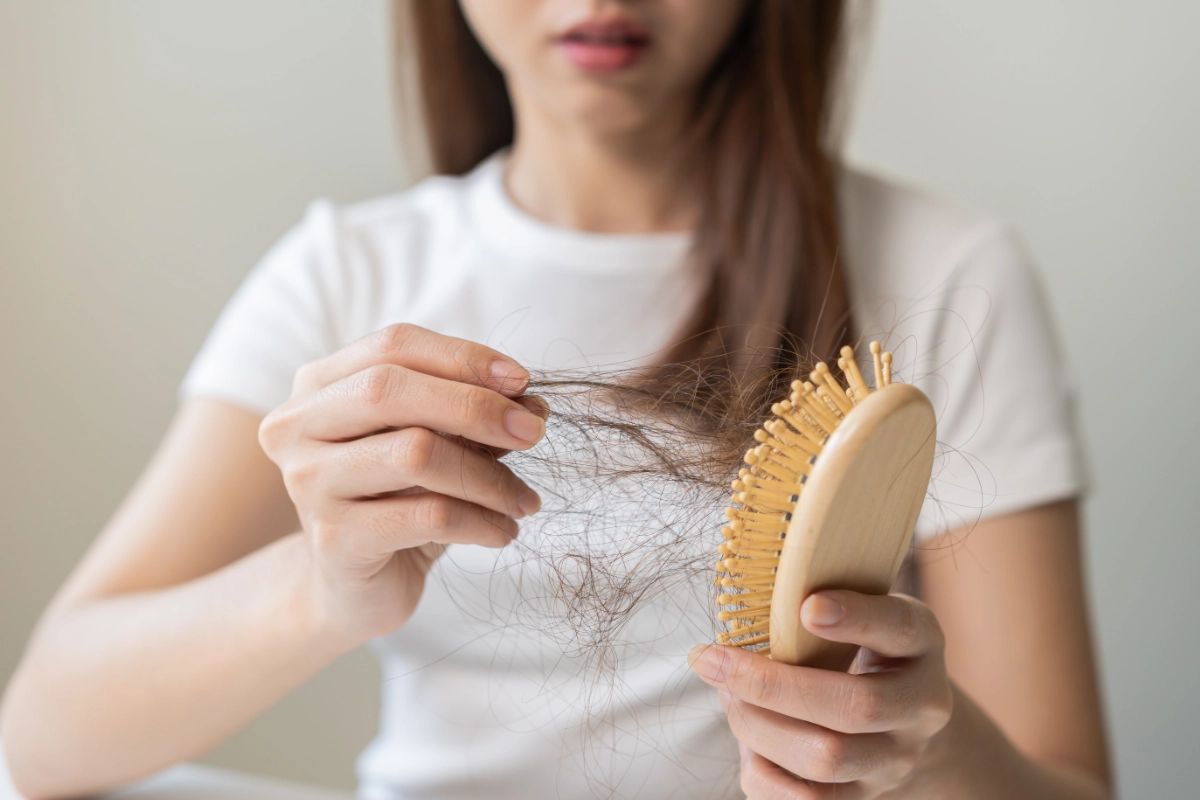
What Exactly Is Hair Loss?
Hair loss, or alopecia, is a common condition that affects both men and women. It can happen gradually or suddenly and may be temporary or permanent, depending on the cause. While some hair shedding is normal, noticeable thinning or bald patches may signal an underlying issue.
Hair loss can affect the scalp or the entire body—and its impact often goes beyond physical appearance, affecting confidence and emotional well-being.
Hair loss can occur for many different reasons. The most common include:
- Genetics: Hereditary hair loss (androgenetic alopecia) is the most frequent cause
- Hormonal changes: Pregnancy, childbirth, menopause, or thyroid problems
- Medical conditions: Autoimmune diseases like alopecia areata, scalp infections, or chronic illness
- Medications: Including treatments for cancer, arthritis, depression, heart problems, or high blood pressure
- Nutritional deficiencies: Low levels of iron, protein, or certain vitamins
- Stress or trauma: Physical or emotional shock can trigger temporary hair loss
What Increases the Risk of Hair Loss?
Your chances of experiencing hair loss may increase with:
- Family history of baldness
- Aging
- Certain health conditions
- Stressful life events
- Poor diet or eating disorders
- Overuse of harsh hair treatments or tight hairstyles
Understanding the Types of Hair Loss
Not all hair loss looks the same. Recognizing the type can help determine the best treatment:
- Androgenetic Alopecia (Male/Female Pattern Baldness): Gradual thinning, often hereditary
- Telogen Effluvium: Temporary shedding due to stress, illness, or hormonal changes
- Alopecia Areata: Autoimmune condition causing round patches of hair loss
- Traction Alopecia: Caused by tight hairstyles pulling on the scalp
- Scarring Alopecia: Hair loss due to inflammation that damages hair follicles permanently
Hair Loss: More Than Skin Deep
Hair can be a big part of how we see ourselves—and losing it can feel overwhelming. But you’re not alone, and there are real, science-backed ways to address it. The sooner you seek support, the more options you may have to preserve and restore your hair.
What Can Make Hair Loss Worse?
Certain habits or conditions can speed up or worsen hair thinning:
- Frequent heat styling or chemical treatments
- Wearing tight ponytails, braids, or extensions
- Poor scalp hygiene
- Ignoring early signs of shedding or thinning
- High levels of stress
The Good News: Hair Loss Can Be Treated
Hair loss is treatable—and in many cases, reversible. Today’s treatment options are more effective and personalized than ever. Depending on the cause, they may include:
- Topical treatments (like minoxidil)
- Oral medications (like finasteride)
- Nutritional and lifestyle support
- PRP (platelet-rich plasma) therapy
- Low-level laser therapy
- Hair transplant surgery
You don’t have to face hair loss alone. With expert care and a tailored treatment plan, regrowth—and renewed confidence—is possible. Reach out to our team today to take the first step toward a healthier scalp and fuller hair.
